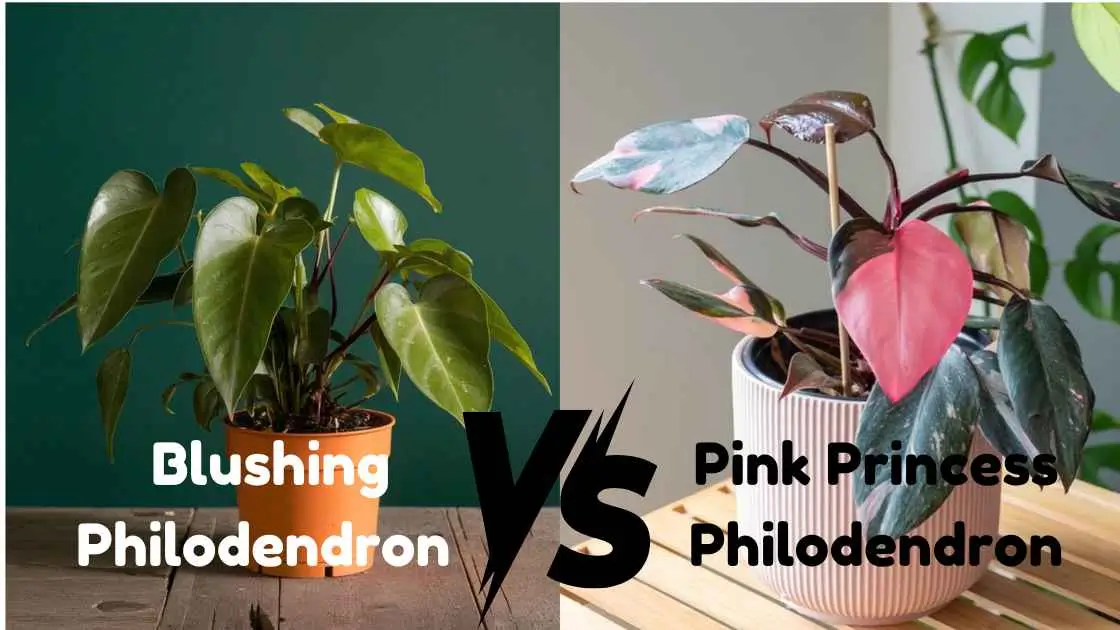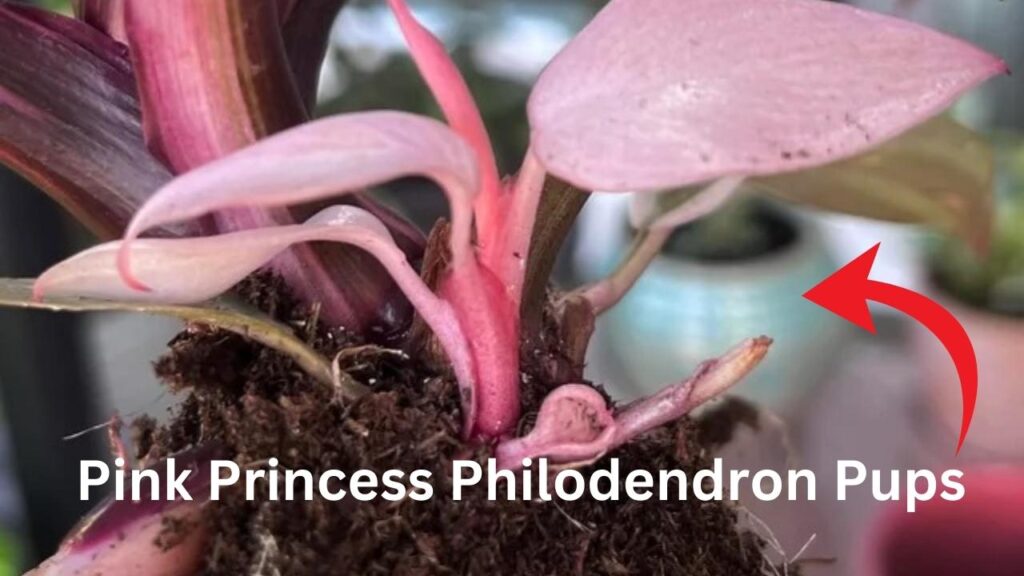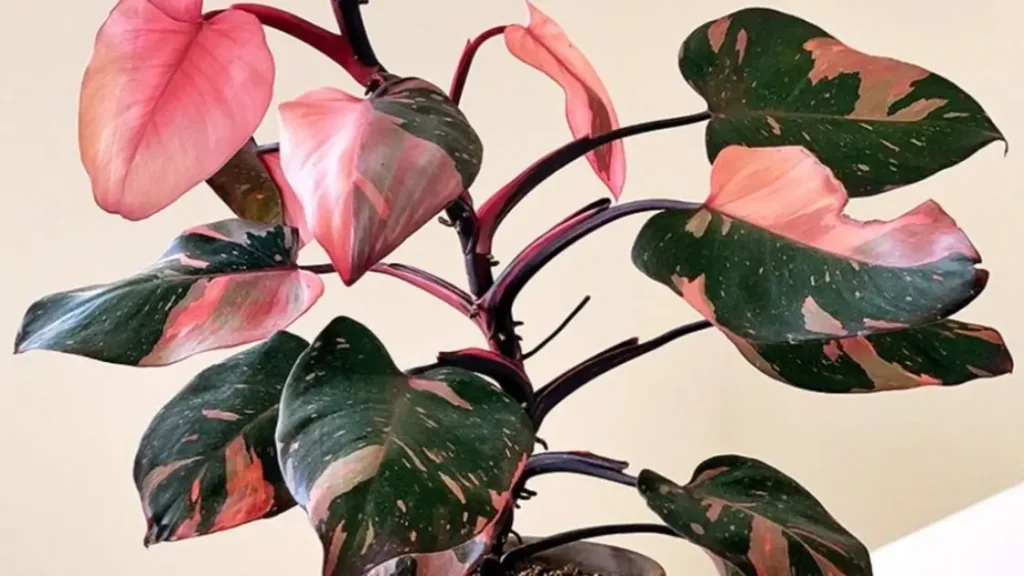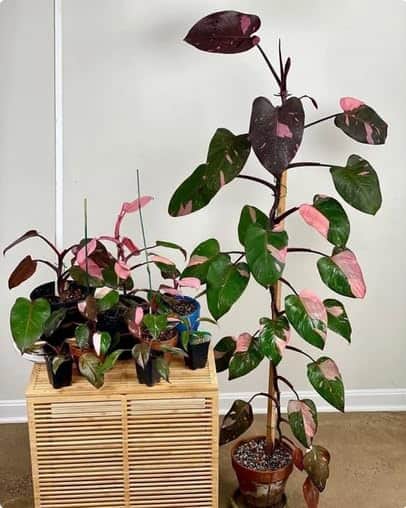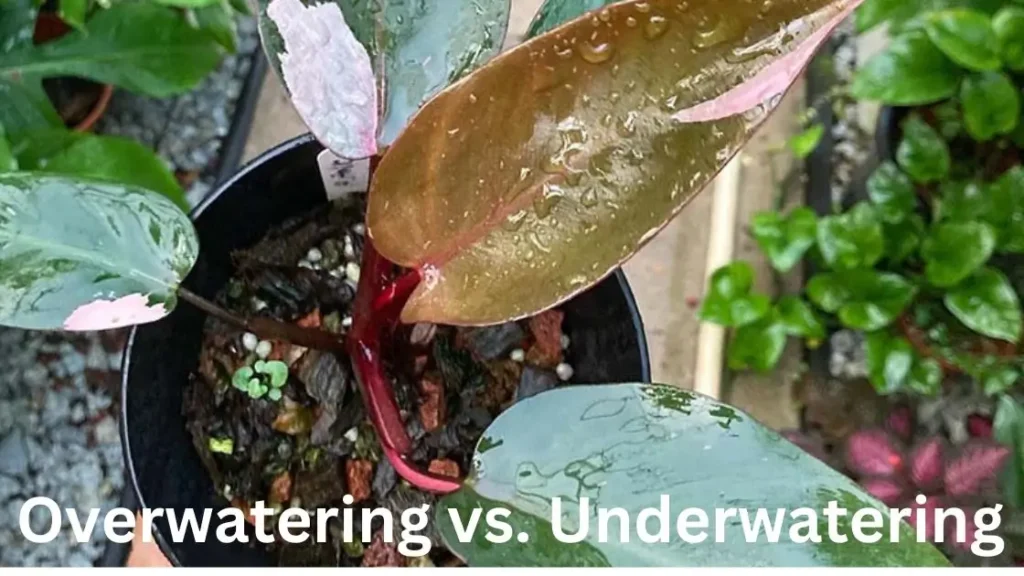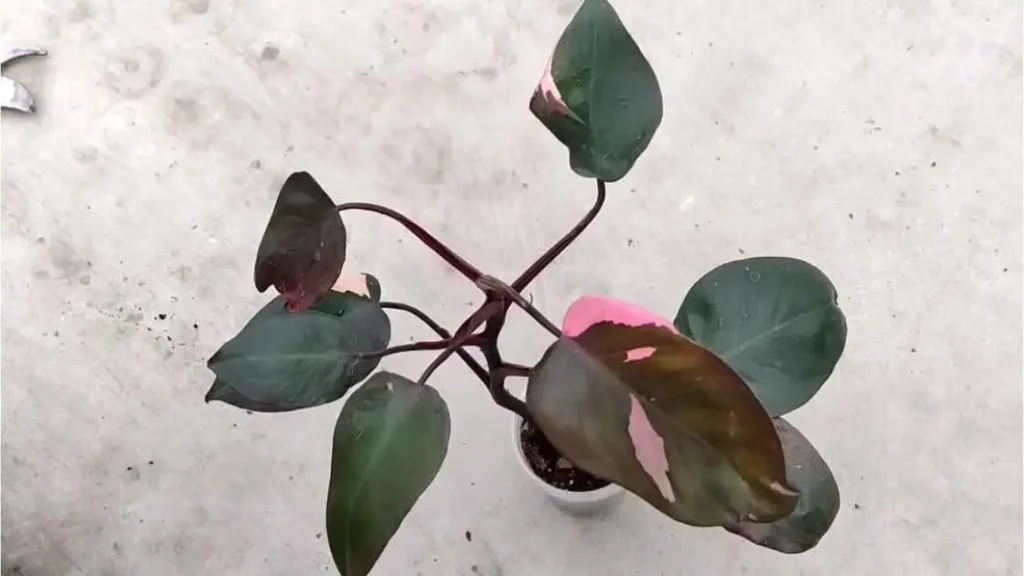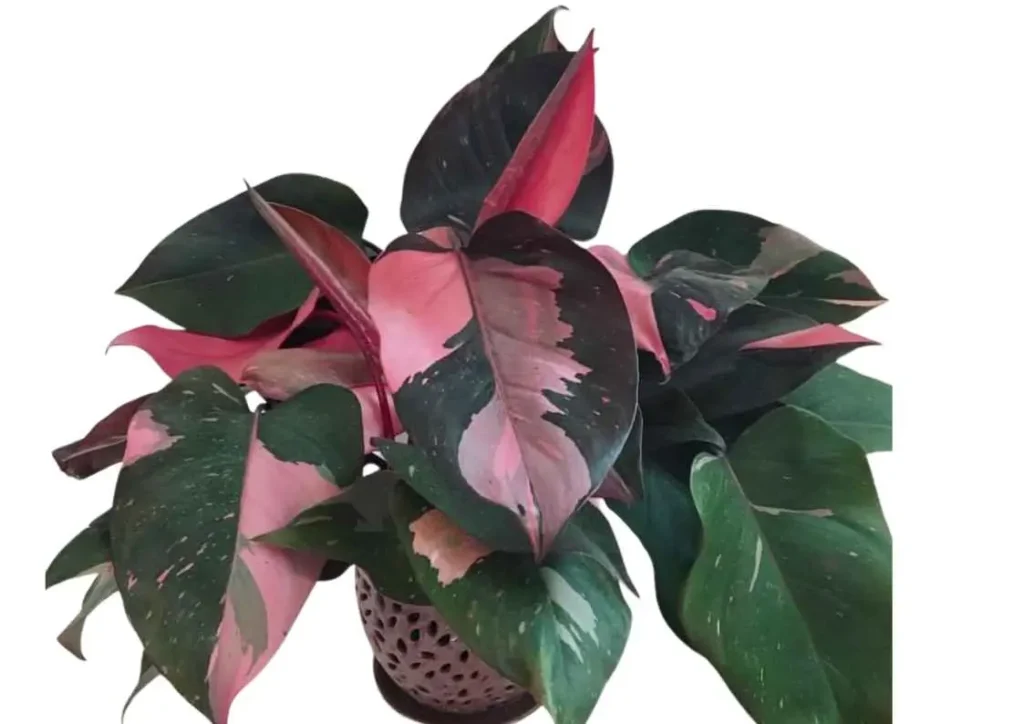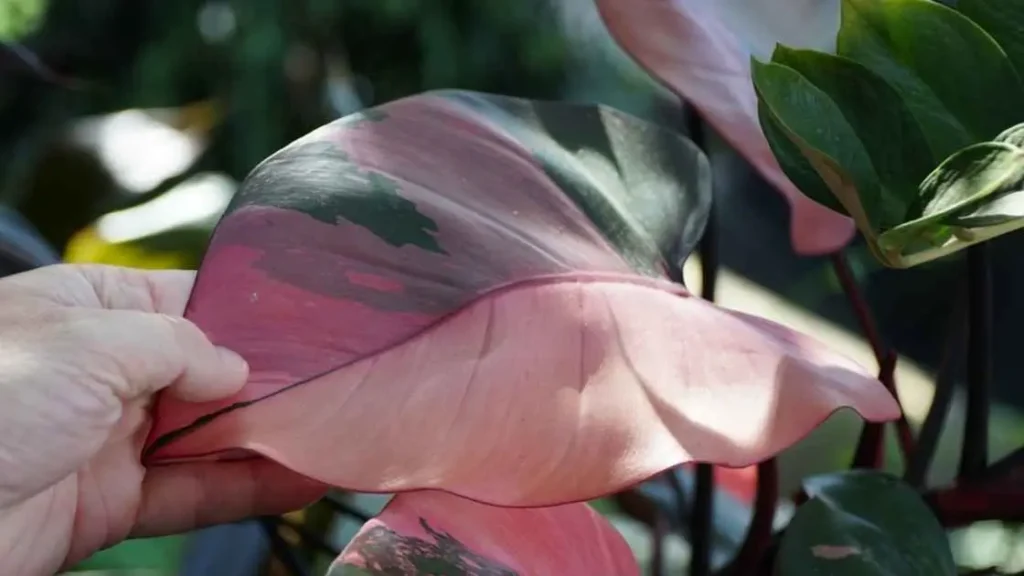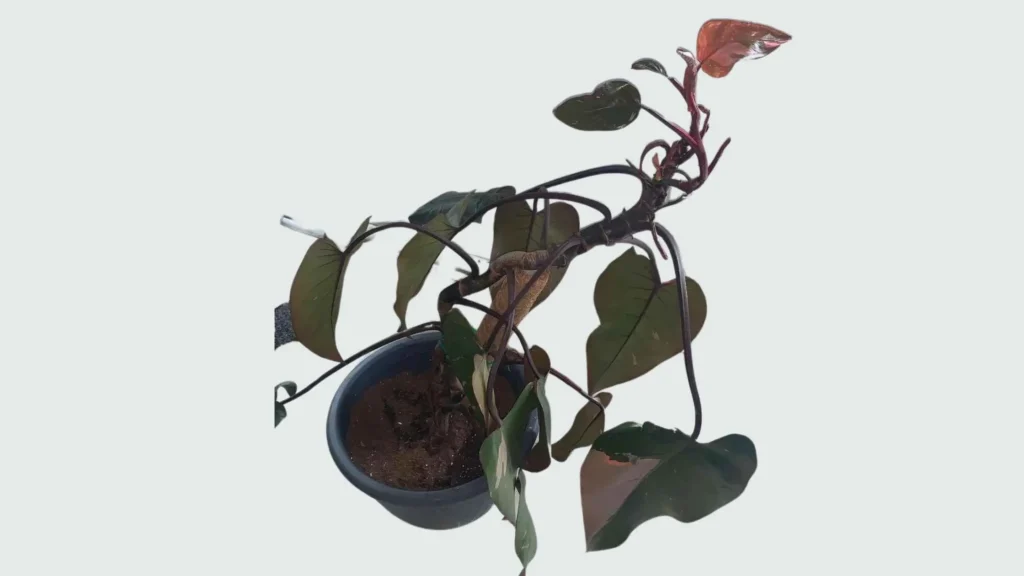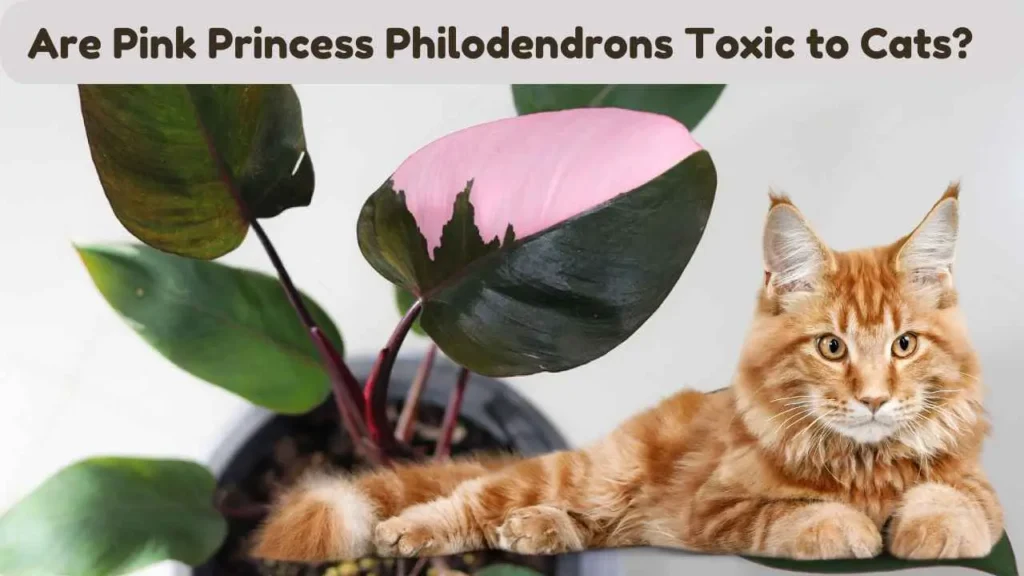Table of Contents
ToggleWhen I started growing houseplants, I couldn’t resist Philodendrons. Their lush leaves and easy care make them popular with both beginners and experienced plant lovers. But if you’ve explored rare plants, you might have faced a tough choice between the Blushing Philodendron and the Pink Princess, just like I did.
Choosing between these two can feel like picking a favorite child. Both are beautiful, but the right one depends on what you want in a plant. In this guide, I’ll compare these two popular Philodendrons, so you can decide which one suits your home best.
How They Look: Blushing Philodendron vs Pink Princess
First, let’s talk about their appearance. How a plant looks is a big part of its appeal.
The Blushing Philodendron also known as Philodendron Erubescens, has deep, glossy green leaves with a reddish tint, especially when young. These heart-shaped leaves give off a romantic vibe, with the red adding a touch of drama to the green. As they mature, the leaves become more green, but still keep a hint of that reddish charm under the right light.
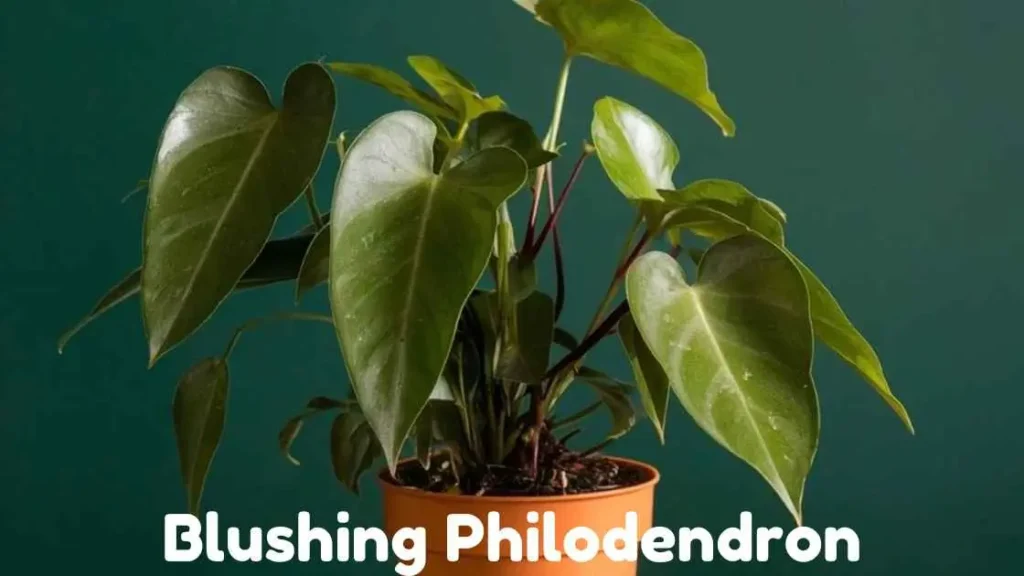
If you like something with more flair, the Pink Princess might steal your heart. This variety has dark green leaves with vibrant pink splashes. The contrast between green and pink is striking, almost like someone painted the pink on. It’s this rare color that makes the Pink Princess not just a plant, but a statement piece in any room.
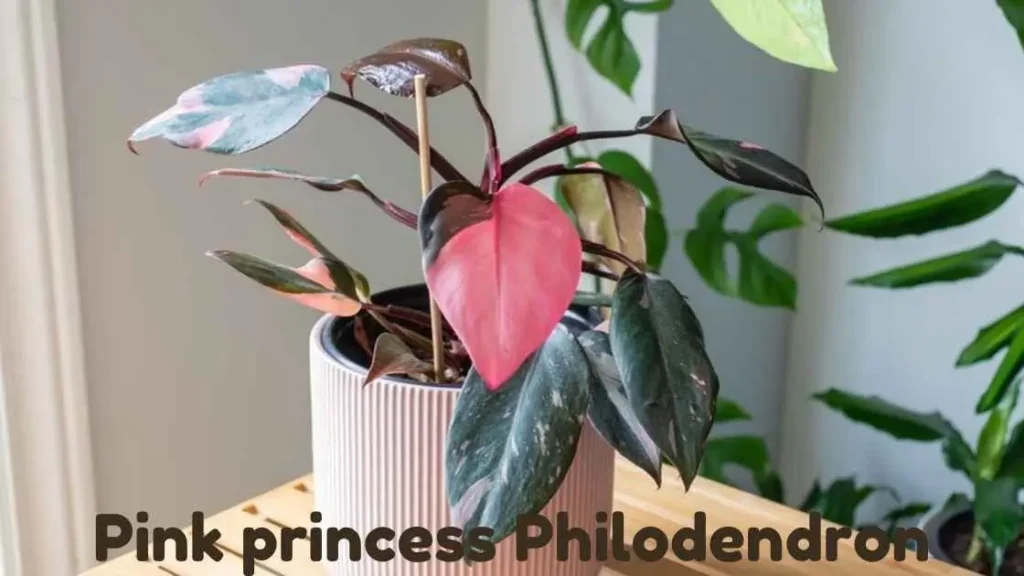
Both plants are climbers and, with proper care, they’ll grow large, healthy leaves that can be the centerpiece of your indoor garden. However, the Pink Princess is pickier about light if you want to keep its pink variegation. It needs bright, indirect light and might even tolerate a bit of direct sunlight to keep the pink vibrant. The Blushing Philodendron is more forgiving and can thrive in medium to bright indirect light.
READ MORE: Pink Princess Philodendron | Ultimate Care, Propagation, and Buying Guide
Growth Patterns: Blushing Philodendron vs Pink Princess
Both plants are climbers, but their growth rates differ.
The Blushing Philodendron grows fast, especially in spring and summer. You might need to give it more space or a taller pole as it quickly climbs and spreads its lush, green leaves. This plant isn’t shy about growing, and with the right conditions, it can become a fairly tall houseplant in just a few years.
The Pink Princess is also a climber but grows more slowly. Its growth rate is moderate, meaning you’ll have more time to enjoy each new leaf as it unfurls. The pink variegation makes it more delicate. The pink areas of the leaves have less chlorophyll, so they grow slower than the green parts. This is why good light is crucial if you want to see that beautiful pink on new leaves.
Both plants benefit from a support structure like a moss pole. The Blushing Philodendron will likely fill out faster, making it ideal for those looking to create a lush, green corner in their home quickly. The Pink Princess might be slower, but the reward of those pink splashes is worth the wait.
Caring for Your Plant: Blushing Philodendron vs Pink Princess
Now, let’s talk about how to care for them, because no matter how beautiful a plant is, it’s the daily care that truly determines if it will thrive in your home.
The Blushing Philodendron is a trooper. It prefers bright, indirect light but can tolerate medium light, making it adaptable to different spots in your home. Watering is simple—let the top inch of soil dry out between waterings, and make sure it’s planted in well-draining soil. This plant likes humidity, but it’s not too picky if your home’s air is a bit dry. Just keep it away from drafts or air conditioning vents.
The Pink Princess needs more attention. Its pink variegation isn’t just for show—it means the plant has less chlorophyll, which makes it more sensitive to light and water. The Pink Princess needs bright indirect light. Without enough light, the pink can fade, and you might end up with more green leaves. Watering should be consistent, but don’t overdo it. The Pink Princess is prone to root rot, especially if it sits in soggy soil. Use an airy, well-draining mix like peat moss, perlite, and orchid bark to prevent waterlogged roots.
The Pink Princess also loves humidity—think 60% or more. If your home is dry, a pebble tray or humidifier could keep this plant happy.
Both plants dislike cold temperatures. They prefer to be kept warm, ideally between 65°F and 80°F. Anything below 60°F, and you might see signs of stress, like wilting or yellowing leaves.
Quick Comparison: Blushing Philodendron vs Pink Princess at a Glance
| Feature | Blushing Philodendron | Pink Princess |
| Scientific Name | Philodendron erubescens | Philodendron erubescens ‘Pink Princess’ |
| Leaf Color | Dark green with a reddish tint | Dark green with pink variegation |
| Growth Rate | Fast, especially in spring and summer | Moderate, slower due to pink variegation |
| Light Requirements | Bright, indirect light; tolerates medium light | Bright, indirect light; benefits from a few hours of direct sunlight |
| Watering Needs | Moderate; let the top inch of soil dry out | Moderate; avoid overwatering, sensitive to root rot |
| Humidity | Prefers high humidity but adaptable | High humidity is essential |
| Temperature Range | 65-80°F (18-27°C) | 65-80°F (18-27°C) |
| Propagation | Stem cuttings, easy to root | Stem cuttings, requires careful selection to maintain variegation |
| Price | Relatively affordable | Expensive due to rarity and unique appearance |
| Suitability for Beginners | Highly suitable for beginners | More challenging, better for experienced plant enthusiasts |
Expanding Your Collection: How to Propagate
Once you’ve mastered their care, you might want to try propagating these plants to expand your collection or share with friends. Both are easy to propagate through stem cuttings.
For the Blushing Philodendron, find a healthy stem with a couple of nodes—those little bumps where leaves and roots grow. Cut just below a node and place the cutting in water or moist soil. Within a few weeks, roots should start forming. This plant is forgiving, so you can expect a good success rate with propagation.
The Pink Princess follows a similar process, but you need to pick a cutting with a good balance of pink and green to keep the variegation. Again, cut below a node and place the cutting in water or soil. Be patient, it might take a bit longer to root compared to the Blushing Philodendron.
Once roots are established, you can pot your new plants. Use well-draining soil and keep the humidity up, especially for the Pink Princess. It’s satisfying to watch these new plants grow, knowing you started them from just a small cutting.
Price & Demand: Why the Pink Princess Costs More
The Blushing Philodendron is generally more affordable and easier to find. It’s easy to propagate and common in nurseries, making it less of a challenge for growers to sell at a reasonable price. You can usually find a healthy Blushing Philodendron at a fraction of the cost of its pink cousin.
The Pink Princess is a bit of a celebrity in the plant world, and like any celebrity, it comes with a higher price tag. Its cost is due to its rarity and the demand for its pink variegation. Not every Pink Princess will produce a lot of pink leaves, and maintaining that color requires optimal care. Because of this, mature Pink Princess plants with good variegation are highly sought after, driving up the price. If you’re buying a Pink Princess, you’re investing in a rare and beautiful piece of living art.
Beginner’s Choice: Which Philodendron is Easier to Grow?
If you’re new to houseplants, choosing between the Blushing Philodendron and the Pink Princess might feel daunting. From my experience, if you want a plant that’s easy to care for, the Blushing Philodendron is a great choice.
The Blushing Philodendron’s care is simple, and it’s pretty resilient to changes in light and humidity. It doesn’t need as much attention as more delicate plants, making it ideal for beginners or anyone who doesn’t want to stress about their plant’s well-being.
The Pink Princess, while stunning, can be trickier. It needs precise light and careful watering, making it more challenging to keep happy. If you’re up for the challenge and love nurturing a rare plant, go for it! But if you’re still building your confidence with plants, starting with the Blushing Philodendron might be better.
Conclusion
After spending time with both the Blushing Philodendron and the Pink Princess, I’ve come to appreciate what each brings to the table. The Blushing Philodendron is perfect if you’re looking for a low-maintenance, fast-growing plant that adds greenery and subtle color to your space. It’s resilient, easy to care for, and a great starter plant for anyone new to houseplants.
The Pink Princess, on the other hand, is a showstopper. Its vibrant pink variegation makes it a statement piece in any plant collection, but it does require more attention and care. If you’re up for the challenge and want a plant that truly stands out, the Pink Princess might be worth the investment.
Whichever you choose, both of these Philodendrons will reward you with their beauty and unique presence in your home. Happy planting!
FAQs
What’s the main difference in appearance between the Blushing Philodendron and the Pink Princess?
The Blushing Philodendron has heart-shaped, glossy green leaves with a reddish tint, especially when young. The Pink Princess, on the other hand, has dark green leaves with striking pink variegation, making it a standout houseplant.
How fast do these Philodendrons grow?
The Blushing Philodendron grows faster, especially during warmer months. The Pink Princess grows more slowly because the pink areas of its leaves have less chlorophyll.
Why is the Pink Princess more expensive?
The Pink Princess is pricier because of its rarity and the challenge of maintaining its pink variegation. Not every plant will develop strong pink colors, making those that do more expensive. The Blushing Philodendron is easier to propagate and more common, so it’s generally more affordable.
Can both varieties be propagated the same way?
Yes, both the Blushing Philodendron and the Pink Princess can be propagated through stem cuttings. However, with the Pink Princess, it’s important to choose a cutting with a good mix of green and pink to maintain the variegation.
What are the ideal light conditions for these Philodendrons?
Philodendrons prefer bright, indirect light. They can handle low light but avoid direct sunlight.
Related
Discover more from Pink Philodendron
Subscribe to get the latest posts sent to your email.

